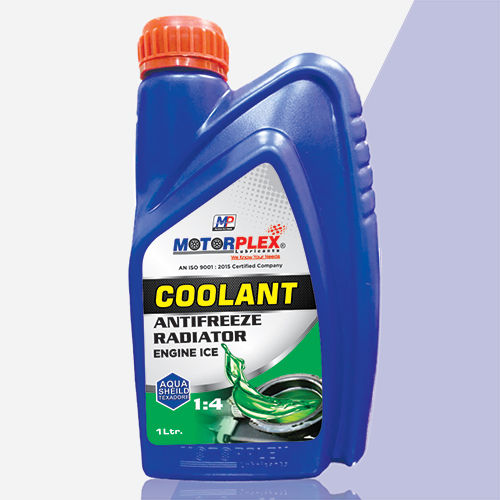

Motorplex Coolant
Product Details:
- Color Green
- Application Industrial, Automobile
- Weight 1 litr
- Type Antifreeze Radiator Engine Ice
- Use Radiator
- Pack Type Bottle
- Click to View more
Motorplex Coolant Price And Quantity
- 50 INR/Box
- 5 Piece
Motorplex Coolant Product Specifications
- Radiator
- Bottle
- Antifreeze Radiator Engine Ice
- 1 litr
- Industrial, Automobile
- Green
Motorplex Coolant Trade Information
- 500 Piece Per Day
- 3 Days
- All India
Product Description
Engine coolant is used to remove heat produced by the engine and transfer it into the cooling system. The coolant receives the heat and circulates it through the radiator, dissipating it back into the atmosphere. A thermostat is used to regulate the temperature of the coolant during the circulation. Although it sounds like a simple process, it is a rather crucial one. Coolant technology serves an extremely important purpose of maintaining the engine. To understand the gravity of cooling systems, a typical heavy duty cooling system circulates the equivalent of a 16,000-litre swimming pool worth of coolant every hour.
In order to regulate the engine temperature, the coolant performs other support functions such as protection from corrosion, cavitation, and scales, that commonly appear in heavy-duty diesel engines. A coolant filter is used to keep the coolant pure. The chemical combination of coolants ensure that it does not react to the many surfaces comes in contact with while maintaining the engine temperature. According to research, 40% of all engine related problems surface due to incompetent cooling systems. Thus, selecting your coolant is of prime importance.
In order to regulate the engine temperature, the coolant performs other support functions such as protection from corrosion, cavitation, and scales, that commonly appear in heavy-duty diesel engines. A coolant filter is used to keep the coolant pure. The chemical combination of coolants ensure that it does not react to the many surfaces comes in contact with while maintaining the engine temperature. According to research, 40% of all engine related problems surface due to incompetent cooling systems. Thus, selecting your coolant is of prime importance.

Price:
- 50
- 100
- 200
- 250
- 500
- 1000+




 Call Me Free
Call Me Free
